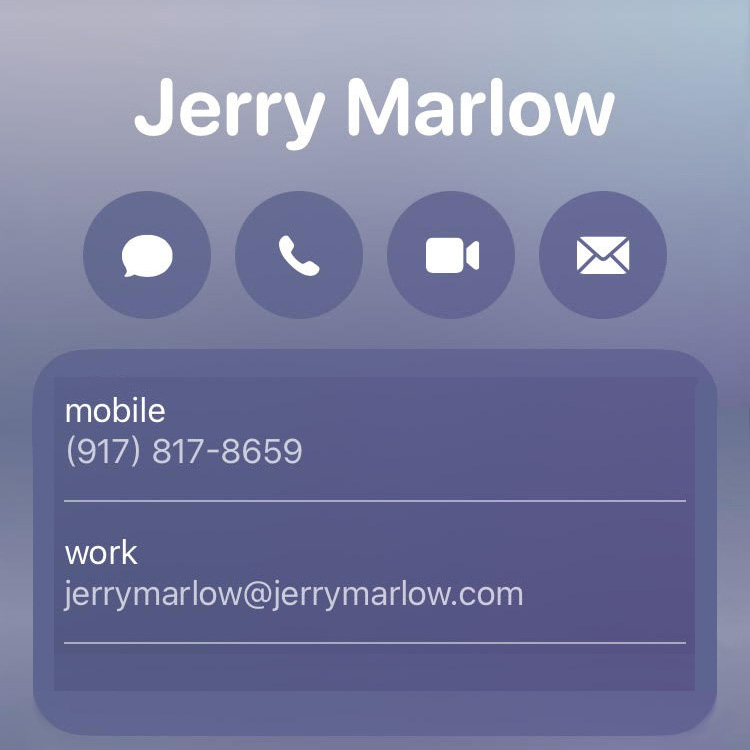I can write for you in ways
that engage people,
enlighten people,
surprise people,
energize people,
walk people
through their decision criteria,
and get them to see things your way.
Through my writing,
I can give your employees
new ways to think about their jobs,
their lives, their opportunities,
their colleagues, and themselves.
If your organization is a financial firm,
I can explain to potential investors
in ways that just about anyone
can understand
your investment strategies,
your investment vehicles,
and your view or model
of how the world works.
If your organization is a law firm,
I can explain to potential clients
the legal rights
that they likely have
in the situation that they are in,
how your firm can help them
protect and exercise those rights,
how your firm may be able
to get them compensation
for someone’s violation of those rights,
and how your firm may be able
to get them compensation
for someone’s denial of those rights.
Whatever your organization’s mission,
I can write for you in ways
that get people to widen their eyes,
smile, breathe deeply,
nod their heads,
summon resolve,
stand up,
and move down the path
that you propose.
For my entire career,
through writing, editing, coaching,
and acting as a collaborator;
I’ve made complex topics and issues
easy to understand, exciting, persuasive,
and relevant to readers and listeners’ lives.
My work has been in finance, law,
real estate, technology, engineering,
organizational development,
and higher education.
My writing empowers people to do things
that they may never have done before
or even thought themselves capable of.
My writing teaches people
how to make decisions
under conditions of uncertainty
and how to manage the risks
that come along with making decisions
under conditions of uncertainty.
My writing frees people
from the paralysis of self doubt.
I’ve written speeches
and created presentations
that got ultra-high-net-worth individuals,
family-office representatives,
and pension-fund trustees excited
about innovative investment strategies.
People in the speakers’ audiences
put millions upon millions of dollars
into the investment vehicles
that my writing explained to them.
I created a presentation
for the chief technology officer
of a major financial institution
to give to his board of directors.
After he gave the presentation,
the then Chairman of IBM
who was on the board exclaimed,
“That was the best presentation
I've ever seen!”
I wrote a speech
for a high-end residential real estate agent
to give at a convention of real estate agents.
The day after he gave the speech,
I asked him, “How’d it go?”
“Standing ovation!”
A year later, I ran into him on the street.
“Hi. Remember me?” I asked.
“Oh yeah,” said he, “You’re the guy
who makes people think I’m smart!”
My client was exceptionally smart.
Ninety percent of the ideas and information
that I put into his speech came from him.
I just put his information and ideas
into a flow of words
that got his audience members
heart-poundingly excited
about the opportunity to sell
U.S. luxury residential real estate
internationally.
In the speech,
I emphasized
that the ultra wealthy
often place great value
on intangibles
that may be associated
with a luxury residential property.
If a real estate broker
communicates
the existence of such intangibles,
to potential buyers
in a mouth-watering way,
then the broker likely can increase
both the probability of a sale
and the closing price of the sale.
This client told me that people
who were in his audience that day
were still coming up to him and telling him
that his speech
changed how they sold
luxury residential real estate
located in the U.S.
to wealthy buyers
who live in major cities around the world.
For a major financial institution,
I created materials
to educate their employees
how money moves
through the global financial system
of central banks, financial institutions,
and other parties.
Nothing moves!
It’s all just bookkeeping!
Well . . . almost nothing moves.
Coins and currency move around
in armored trucks
and in people’s pockets, purses, and wallets.
Governments, central banks,
and a few other parties
keep a total of half a million gold bars
in closets that they rent in the basement
of the Federal Reserve Bank
in New York City.
To settle a net financial obligation
between any two of these parties,
employees of the Fed
move some gold bars
from the payor’s closet
to the payee’s closet.
The Fed employees wear steel-toe shoes
just in case someone drops a gold bar
on someone’s foot.
Everything else is just bookkeeping.
In the settlement of securities trades,
nothing much moves anymore either.
Legacy paper securities sit immobilized
in just a few vaults.
Most new securities are created
only as bookkeeping entries.
Speaking of securities,
every financial instrument
ain’t nothin’ but a contract
between a buyer and an issuer.
A debt contract typically exchanges
a known and certain amount of money
(bookkeeping entry) in the present moment
for the promise of a known
or indexed flow of payments
(bookkeeping entries) in the future.
An equity instrument typically exchanges
a known and certain amount of money
(bookkeeping entry) in the present moment
for the promise (through ownership)
of an unknown and uncertain payment
or flow of money (bookkeeping entries)
in the future.
A derivative contract may promise
future payments (bookkeeping entries)
indexed to the unknown and uncertain
future values of just about anything
in exchange for a payment
of a certain amount of money
in the present moment
(a bookkeeping entry).
Or a derivative contract may promise
future payments (bookkeeping entries)
indexed to the unknown and uncertain
future values of one basket of things
in exchange for a promise of future payments
(bookkeeping entries) indexed
to the unknown and uncertain
future values
of some other basket of things.
Like I said, “It’s all just bookkeeping.”
Today, Uncle Scrooge no longer
swims in his money bin
of cash and coins.
Instead, on his iPhone,
Scrooge scrolls
through the bookkeeping
of his custodian accounts.
Even the Beagle Boys
have gone digital.
When you mentor your employees,
if you throw in the observation
that every corporation
is a nexus of contracts—
some contracts add to income
in the corporation’s bookkeeping;
some contacts add to expenses
in the corporation’s bookkeeping—
then your employees may begin
to develop a more lucid sense
of how the world works.
Many of them may get a brain surge
of how to generate greater profits
in that world for your firm.
If they haven’t done so already,
then, when employees of financial firms
grasp that the settlement
of financial transactions
is just bookkeeping,
grasp that the settlement of trades
on the financial markets
is just bookkeeping,
grasp that financial instruments
are just contracts
that generate bookkeeping entries,
and grasp that every corporation
is a nexus of contracts;
they likely will begin to fathom
how powerfully financial models
can be electronically integrated
with trading strategies,
with trade execution,
with securities settlement,
and with the redistribution of wealth
throughout society at large.
I researched, wrote,
and created presentations
for the entire senior management team
of the operations division of a major bank
to give to a convocation
of all the division’s managers.
The presentations gave attendees
new, energizing ways to think
about their jobs, their work, and their roles
in global finance and commerce.
To set the tone and energy level
for this convocation,
I wrote and produced a multimedia module.
In the last sentence of the module—
to building music— the narrator said,
“Today, the leaders of
[name of bank and division]
challenge you to manage opportunity.”
Each department head
then took convocation attendees
through animations
of his or her department’s transaction flows.
Each department head explained
how to recognize opportunity,
how to seize opportunity,
and how to manage opportunity.
After a junior manager
heard the presentations, she said,
“When I went back to my desk,
I asked myself,
‘What can I do differently?’ ”
A week later,
after a department head
gave her presentation
to her line employees,
one went up to her and said,
“I never knew my job was so important.
I can’t wait to get back to work!”
To a large extent,
today’s financial thinking,
investment decision-making,
design of derivative securities,
and methodologies in quantitative finance
grew out of papers that Fischer Black,
Myron Scholes, and Robert Merton
published in 1973.
This work, collectively referred to
as Black-Scholes Option Pricing Theory,
provided the first systematic way
to calculate a price for a call option
and calculte a price for a put option.
Call Option Price:
C = S * N(d1) - K * e-rT * N(d2)
Put Option Price:
P = K * e-rT * N(-d2) - S * N(-d1)
Where:
-
C: Theoretical price of the call option
-
P: Theoretical price of the put option
-
S: Current stock price (spot price)
-
K: Strike price (exercise price)
-
T: Time to expiration of the option (in years)
-
r: Risk-free interest rate
-
N: Cumulative distribution function
of the standard normal distribution -
e: Euler's number (approximately 2.71828)
-
σ: Volatility of the underlying asset
-
ln: Natural logarithm
d1 and d2 Calculation:
d1 = (ln(S / K) + (r + σ2 / 2) * T) / (σ * √T)
d2 = d1 - σ * √T
The Black-Scholes formulas
are not arithmetic
that most people use every day.
To make Black-Scholes
options pricing theory
easy to understand
for the mathematically challenged,
I designed and programmed
a visual simulator.
To take people through the simulations,
I wrote the book,
Option Pricing: Black-Scholes Made Easy.
Of the book, a sophomore
at Tsinghua University in China
(whose first language was not English)
wrote to me,
“Your book is friendly
and easy to understand.
I like your writing style.
You express complex ideas
in easy words.”
Of the simulator and book,
in an Amazon review,
a British accountant wrote:
“Having a degree in mathematics and
a professional accountancy qualification
did not prepare me for the explanations
of Black Scholes to be found
in most text books.
“They may have gotten a Nobel Prize
for their option-pricing model
but Black and Scholes
were never going to get an award
for clarity of explanation.
“Having grappled
with this area for a few months,
I decided I needed
a little more innovative help;
hence my purchase
of Jerry Marlow’s interactive tutorial.
“Two days later, I feel I could go
for the next Nobel Prize myself!
“So many things click into place
so quickly, it’s marvelous.”
To fill jobs in quantitative finance and fintech,
a major money center bank wanted to hire
from prestigious colleges and universities
outstanding students
who were about to receive degrees
in math, physics, engineering,
and computer science.
The bank asked me to write
their technology recruiting brochure.
To gather concepts, ideas, and information
for the brochure,
I interviewed bank executives,
technology leaders,
and the bank’s visionaries
all the way up
to the Chief Technology Officer,
the President of the bank,
and the Vice Chairman of the Board.
I distilled the thoughts, ideas, and words
of these leaders
into the recruiting brochure.
I titled the brochure,
A Time of Change Is a Time of Opportunity.
The final subtitle of the brochure proclaimed, “The takeoff point is now!”
The brochure gave its target readers goosebumps.
The bank got the hires it wanted.
During the depths of the mortgage crisis,
I was Managing Director of Communications
for the hedge fund Ironwood Global, LLC.
In that role, I created pitch books
presentations, and brochures
that explained to folks
at The White House,
at the Federal Housing Administration (FHA),
and at other hedge funds
how Ironwood Global could get
underwater, FHA-insured mortgages
off the books of the federal government,
get those underwater mortgages
above water,
and keep homeowners in their homes.
The pitch books and presentations
that I created lined up billions of dollars
from other hedge funds
with which to purchase
these underwater, FHA-insured mortgages
as soon as the FHA approved the sale
of the mortgages to Ironwood Global.
Through a tech contracting agency,
a major financial institution hired me
to create PowerPoint guides
to the tools, data flows,
and data-management capabilities
of their relational database
that stores trading and reference data
on their three-million-plus
capital-markets trades a day.
Systems managers and developers
were to write drafts.
I was to edit the drafts.
One systems manager dragged his feet.
To plead with this systems manager
to send me a draft,
my manager sent him this text message:
“Hari, I know you folks are drowned
in work to the head level every day.
“You don’t have much time
to spend on anything non-critical.
“The work Jerry does is marvelous.
“Users read the stuff and educate themselves.
“We don’t have to get on
to these stupid calls and explain
how our systems behave anymore.
“I feel it’s worth putting in
one extra weekend or night
and provide the documentation to Jerry.
“It pays every day on day to day basis.”
An entrepreneur
had the idea
to put wind turbines
and electricity-storage devices
on the rooftops of buildings
in New York City,
generate and store electricity
when electricity prices were low,
and sell electricity
when electricity prices were high.
This entrepreneur needed a pitch book
with which to raise money
from investors.
I researched, wrote, designed,
and created the pitch book.
In the pitch book, I explained
how the market for electricity works.
The market for electricity
is the most volatile commodities market
in the world.
Demand for electricity fluctuates
with time of day, with time of year,
with day of the week, and with temperature.
An electrical grid’s capacity
to generate and supply electricity is limited.
Transmission capacity is limited.
An electricity grid likely has chokepoints.
The operators who manage a grid
must match the supply of electricity
to the demand for electricity
within fractions of a second.
Otherwise the grid goes down.
Blackout!
In New York State,
to match supply to demand,
grid operators run both
day-ahead electricity auctions
and two-hour-ahead electricity auctions.
On the grid, prices paid for electricity
vary from injection point to injection point.
The most profitable sites
at which to inject electricity into the grid
are the injection points
that have the greatest price volatility.
To find the injection points
in the New York City grid
that had the greatest price volatility,
I wrote a software application
that crawled and searched
through voluminous amounts
of publicly available pricing data,
calculated the price volatility
at each injection point
over the previous year,
and identified the injection points
that had the greatest price volatility.
I created the pitch book
and wrote the script to go with it.
When the time came
to give the pitch to a hedge fund,
the entrepreneur
made me a managing director
of his startup
and asked me to give the pitch
instead of him because,
through my research,
I understood
the operation of the New York grid,
the constraints on the New York grid,
the day-ahead auctions,
and the hour-ahead auctions
better than he did.
Through my knowledge
of Black-Scholes options pricing theory,
I had a better understanding
of the value of price volatility.
I created a sales presentation,
for the head of fixed-income marketing
at a major bank. After I took her
through the presentation,
she, for a few seconds,
looked at me kinda funny.
Then she asked me,
“Would you like to become a trader?”
“Thank you for the offer.” I said,
“But I‘m a writer. Not a trader.”
These are but a few of the writing projects
in which I have enlightened target audiences
about complex issues
and in which I have helped my clients
accomplish their organizations’ goals
and their personal goals.
I love to learn.
For each writing project
in a realm that is new to me,
I enjoy doing background research.
Within client organizations,
I enjoy interviewing very smart people
and learning what they know
and what they have figured out.
When New York University asked me
to write a grant proposal to create
their Center for Neural Science,
I interviewed (among others) biologists,
a researcher in robotics,
electromagnetic-imaging physicists,
and an NYU neurologist
who was working with the U.S. Air Force
to help the Air Force better integrate
pilots with fighter jets.
I wrote the grant proposal.
NYU got their dough.
Through my writing,
I like to engage people, energize them,
enlighten them, empower them,
and persuade them to take
new courses of action.
Through my writing,
I like to make people’s lives
more productive and more rewarding.
In short, I like to make
readers and listeners happy.
And when I can, even ecstatic!
If you seek a writer
who knows how to do these things,
let’s schedule a conversation.
Phone me or text me at
(917) 817-8659
or email me at jerrymarlow@jerrymarlow.com.
When we have our conversation,
you can tell me
about your organization’s goals.
You can tell me about your personal goals.
We can talk about how I can help you
accomplish both sets of goals simultaneously.
Jerry Marlow
chapterwhatmywritinghasaccomplished










